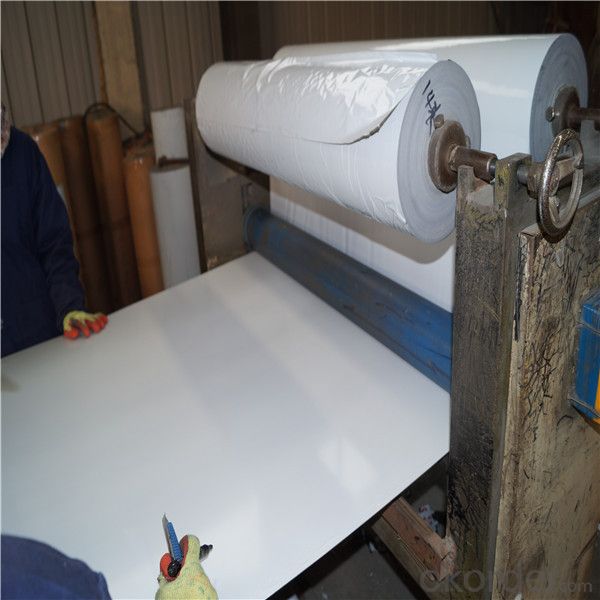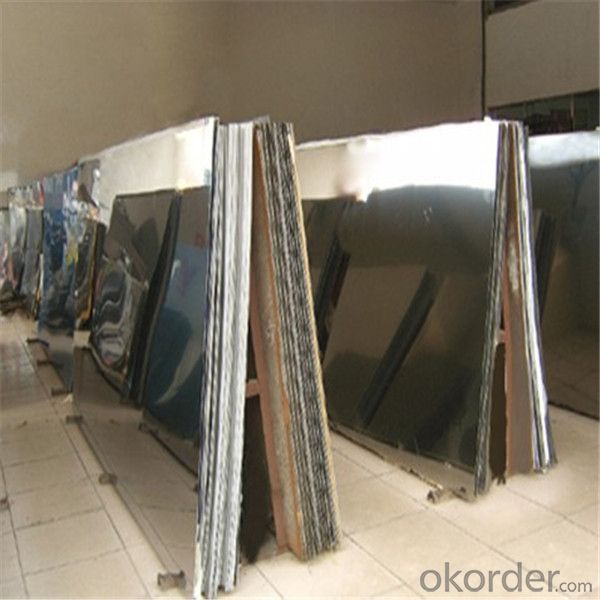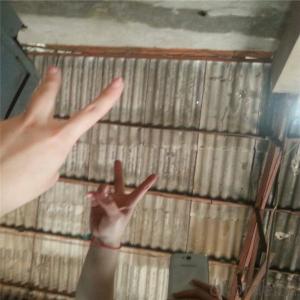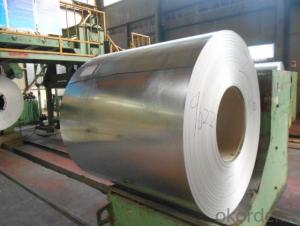300 Series Stainless Steel Sheets and Coils 304 316 310S
- Loading Port:
- Shanghai
- Payment Terms:
- TT OR LC
- Min Order Qty:
- 2 m.t.
- Supply Capability:
- 20000 m.t./month
OKorder Service Pledge
OKorder Financial Service
You Might Also Like
Item specifice
Product: 300 Series Stainless Steel Sheets and Coils 304 316 310S
Standard | ASTM AISI JIS DIN EN GB etc. |
Grade | 304 304L 316 316L 310S 321 |
Brand | TISCO, LISCO, WUHANG, BAOSTEEL, BAOXIN, POSCO, JISCO |
Thickness range | cold rolled: 0.3-3.0mm |
Width range | 600-1500mm |
Weight | 3~5 tons/coil, 5~10 tons/coil, or customized. |
Size | 1000mm*2000mm, 1219mm*2438mm, 1219mm*3048mm, or as required |
Finish | 2B, BA, No.4, 8k, hairline, embossed, etched, vibration, pvd color coated, titanium, sand blasted, anti-fingerprint |
Color | Gold, black, sapphire blue, brown, bronze, purple, champagne gold, diamond, rose gold, rose red, etc |
Lead time | 7 ~15 working days after the receipt of 30% deposit |
Payment terms | 30%TT for deposit, 70% balance before shipment or LC at sight |
Packing | Wooden pallet or according to customer's request |
Application | Interior/exterior/architectural/bathroom decoration, elevator decoration, hotel decoration, kitchen equipment, ceiling, cabinet, kitchen sink, advertising nameplate |
Main product chemical composition
Grade | C % | Si % | Mn % | P % | S % | Cr % | Mo % | Ni % | Other % |
201 | ≤0.15 | ≤1.00 | 5.5-7.5 | ≤0.06 | ≤0.03 | 16-18 | - | 3.5-5.5 | N≤0.25 |
202 | ≤0.15 | ≤1.00 | 7.5-10.0 | ≤0.06 | ≤0.03 | 17-19 | - | 4.0-6.0 | N≤0.25 |
301 | ≤0.15 | ≤1.00 | ≤2.00 | ≤0.045 | ≤0.03 | 16-18 | - | 6.0-8.0 | - |
302 | ≤0.15 | ≤1.00 | ≤2.00 | ≤0.045 | ≤0.03 | 17-19 | - | 8-10.0 | - |
303 | ≤0.15 | ≤1.00 | ≤2.00 | ≤0.2 | ≥0.015 | 17-19 | ≤0.6 | 8.0-10.0 | - |
304 | ≤0.08 | ≤1.00 | ≤2.00 | ≤0.045 | ≤0.03 | 18-20 | - | 8-10.5 | - |
304L | ≤0.03 | ≤1.00 | ≤2.00 | ≤0.045 | ≤0.03 | 18-20 | - | 9-13 | - |
309S | ≤0.08 | ≤1.00 | ≤2.00 | ≤0.045 | ≤0.03 | 22-24 | - | 12-15 | - |
310S | ≤0.08 | ≤1.5 | ≤2.00 | ≤0.045 | ≤0.03 | 24-26 | - | 19-22 | - |
316 | ≤0.08 | ≤1.00 | ≤2.00 | ≤0.045 | ≤0.03 | 16-18 | 2-3 | 10-14 | - |
316L | ≤0.03 | ≤1.00 | ≤2.00 | ≤0.045 | ≤0.03 | 16-18 | 2-3 | 12-15 | - |
317 | ≤0.08 | ≤1.00 | ≤2.00 | ≤0.045 | ≤0.03 | 18-20 | 3-4 | 11-15 | - |
321 | ≤0.08 | ≤1.00 | ≤2.00 | ≤0.045 | ≤0.03 | 17-19 | - | 9-13 | Ti≥5×C |
430 | ≤0.12 | ≤0.75 | ≤1.00 | ≤0.04 | ≤0.03 | 16-18 | - | ≤0.6 |


- Q:Are stainless steel sheets suitable for cryogenic applications?
- Indeed, stainless steel sheets prove to be apt for cryogenic applications. Renowned for its commendable mechanical attributes like remarkable strength and resilience, stainless steel emerges as an ideal choice for environments characterized by low temperatures. Furthermore, stainless steel exhibits an impressive ability to resist corrosion, a critical quality when confronted with cryogenic temperatures. It remains steadfast in maintaining its mechanical properties, steadfastly refusing to succumb to brittleness even in ultra-low temperatures. Consequently, stainless steel sheets find themselves widely employed in cryogenic applications such as storage tanks, pipelines, and equipment designed to handle liquefied natural gas (LNG), liquid nitrogen, and other cryogenic fluids.
- Q:Can stainless steel sheets be used for automotive exhaust systems?
- Indeed, automotive exhaust systems can utilize stainless steel sheets. The use of stainless steel is prevalent in exhaust systems owing to its remarkable resistance to corrosion, ability to withstand high temperatures, and durability. It successfully endures the harsh conditions present in exhaust systems, encompassing intense heat, moisture, and chemicals. Stainless steel sheets can be shaped and manufactured into diverse components of the exhaust system, including pipes, mufflers, and catalytic converters. They offer enduring performance, minimize the likelihood of rust and corrosion, and enhance the overall efficiency and longevity of the automotive exhaust system.
- Q:Can stainless steel sheets be used for chemical processing equipment?
- Yes, stainless steel sheets can be used for chemical processing equipment. Stainless steel is known for its corrosion resistance, making it suitable for handling various chemicals and acids. It also has excellent strength and durability, which makes it a reliable choice for chemical processing equipment that requires high performance and longevity.
- Q:Are stainless steel sheets resistant to pitting?
- Stainless steel sheets are indeed resistant to pitting. Renowned for its exceptional corrosion resistance, stainless steel is capable of withstanding pitting corrosion. Pitting corrosion, a localized form of corrosion that results in the creation of small pits or holes on metal surfaces, is effectively deterred by stainless steel due to the presence of chromium. The chromium in stainless steel forms a passive oxide layer on the surface, thereby preventing the metal from experiencing further corrosion. This protective oxide layer serves as a barrier, safeguarding stainless steel against pitting. Moreover, the resistance to pitting can be further enhanced by the composition and specific grade of stainless steel, solidifying stainless steel sheets as a dependable choice for numerous applications where corrosion resistance is of utmost importance.
- Q:Can stainless steel sheets be polished?
- Stainless steel sheets, indeed, possess the ability to undergo polishing. The act of polishing these sheets serves the purpose of enhancing their visual appeal, resulting in the creation of a sleek and lustrous surface. This procedure typically entails the utilization of abrasive substances like sandpaper, polishing compounds, or specialized machinery in order to eliminate any flaws or marks present on the stainless steel sheet's surface. This task can be accomplished both manually or with the assistance of specific equipment. By polishing stainless steel sheets, not only does their aesthetic allure become enhanced, but their susceptibility to corrosion and staining is also significantly reduced.
- Q:Are stainless steel sheets heat resistant?
- Indeed, stainless steel sheets exhibit exceptional resistance to heat. Renowned for their ability to withstand high temperatures and corrosion, stainless steel sheets are highly suitable for a wide range of applications. They maintain their structural integrity even under intense heat, without warping, melting, or compromising their integrity. This remarkable heat resistance can be attributed to the presence of chromium in stainless steel, which forms a protective oxide layer on the surface, preventing oxidation and preserving its strength at elevated temperatures. Consequently, stainless steel sheets are extensively utilized in vital industries like manufacturing, construction, automotive, and food processing, where the ability to withstand heat is paramount.
- Q:What is the elongation of stainless steel sheets?
- When stainless steel sheets are subjected to tensile forces, their ability to stretch or deform without breaking is known as elongation. This property is measured as a percentage of the original length of the sheet that can be stretched before it fractures. The elongation of stainless steel sheets can vary depending on the grade of stainless steel and the way it is manufactured. In general, stainless steel sheets have a higher elongation compared to metals like carbon steel because they are more ductile. However, the specific elongation value can vary based on factors such as the grade, thickness, and tempering of the stainless steel sheet.
- Q:How do you cut intricate designs in stainless steel sheets?
- Cutting intricate designs in stainless steel sheets can be a challenging task but can be accomplished through various methods. One common method is using a laser cutting machine. Laser cutting offers precise and clean cuts, allowing for intricate designs to be achieved with ease. The laser beam melts or vaporizes the stainless steel, leaving behind a smooth and precise cut. Another method is using a CNC plasma cutter. This method utilizes a computer-controlled machine that uses a plasma torch to cut through the stainless steel. CNC plasma cutters offer high precision and can handle complex designs. However, the edges may require additional finishing to achieve a smooth and polished look. Waterjet cutting is another option for cutting intricate designs in stainless steel sheets. This method uses a high-pressure jet of water mixed with an abrasive material to cut through the metal. Waterjet cutting is a versatile technique that can handle various thicknesses and designs, producing accurate and detailed results. For smaller projects or intricate designs, a jeweler's saw or a metal nibbler can be used. These handheld tools allow for manual cutting and offer more control over the design. However, they may require more time and effort compared to automated methods. Regardless of the method chosen, it is essential to ensure safety precautions are taken, such as wearing protective gear and following manufacturer's instructions. Additionally, practicing on scrap pieces before working on the final stainless steel sheet can help refine the technique and achieve the desired results.
- Q:Can stainless steel sheets be used for wall cladding?
- Yes, stainless steel sheets can be used for wall cladding. Stainless steel is a durable and corrosion-resistant material that is often chosen for its aesthetic appeal and ease of maintenance. It is commonly used in commercial and residential spaces to enhance the appearance of walls while providing protection and durability.
- Q:Can stainless steel sheets be used for elevator buttons?
- Yes, stainless steel sheets can be used for elevator buttons. Stainless steel is a popular material choice for elevator buttons due to its durability, corrosion resistance, and aesthetic appeal. It can withstand heavy usage, frequent contact, and is easy to clean and maintain. Additionally, stainless steel has a sleek and modern appearance that complements the overall design of the elevator.
1. Manufacturer Overview |
|
|---|---|
| Location | |
| Year Established | |
| Annual Output Value | |
| Main Markets | |
| Company Certifications | |
2. Manufacturer Certificates |
|
|---|---|
| a) Certification Name | |
| Range | |
| Reference | |
| Validity Period | |
3. Manufacturer Capability |
|
|---|---|
| a)Trade Capacity | |
| Nearest Port | |
| Export Percentage | |
| No.of Employees in Trade Department | |
| Language Spoken: | |
| b)Factory Information | |
| Factory Size: | |
| No. of Production Lines | |
| Contract Manufacturing | |
| Product Price Range | |
Send your message to us
300 Series Stainless Steel Sheets and Coils 304 316 310S
- Loading Port:
- Shanghai
- Payment Terms:
- TT OR LC
- Min Order Qty:
- 2 m.t.
- Supply Capability:
- 20000 m.t./month
OKorder Service Pledge
OKorder Financial Service
Similar products
New products
Hot products
Hot Searches
Related keywords





























